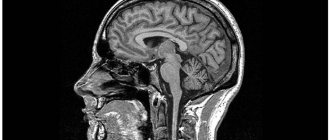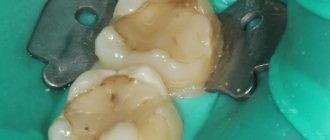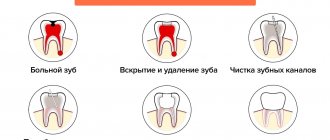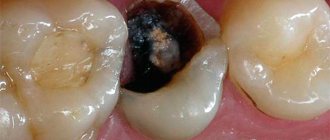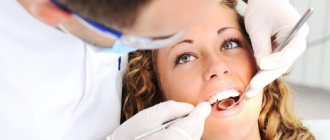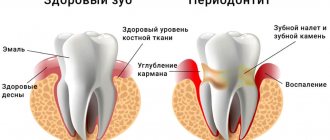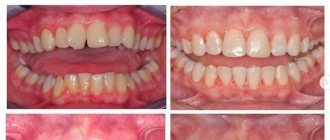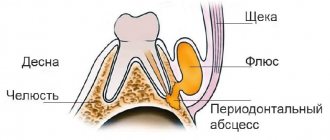- Should I remove the root or not?
- What to do if a tooth is fractured?
Athletes are at risk for broken teeth, however, even without being a boxer or hockey player, everyone has a chance to break a tooth.
A fall on ice, a car accident, an overly “hard” nut or cracker – all this can cause an unpleasant situation when the crown part is broken at the root. What to do in this case, and what measures should be taken before going to the doctor:
- Apply dry cold.
- Suspecting that not only the tooth, but the entire jaw is broken, it is necessary to immobilize it and apply a splint.
- If possible, take a broken tooth with you to the doctor.
After this, you must immediately go to the dentist.
Content:
- Causes
- Signs of a fracture
- What to do
- Diagnostic measures
- What to do if the root is preserved
- When you have to remove a broken tooth along with the root
- How to avoid a fracture
A tooth fracture is a serious dental injury.
It manifests itself as sharp pain and a change in the appearance of the crown. It requires urgent reconstructive measures, since exposed tissues are unprotected and are easily destroyed under the influence of various external factors. It is important to understand that if a tooth is broken at the root, the situation can definitely be corrected. In some cases, doctors are able to “grow” the fragment back. But most often the issue is resolved with the help of prosthetics.
Causes of chipped teeth
Several many:
- Weakening of dental tissue due to large consumption of sweets, juices, carbonated drinks and other foods that contain large amounts of sugar and acid;
- Malocclusion;
- Lack of calcium in the body;
- Reduced acidity in the oral cavity;
- Caries;
- Other diseases of the oral cavity;
- General weakening of the immune system;
- Hormonal disorders;
- Smoking;
- Diseases of internal organs.
These reasons, by the way, can also cause loosening of teeth and the development of all kinds of chronic diseases.
Causes
The root of a tooth or its crown can break for various reasons. The most common:
- genetically determined anomalies in the structure of hard dental tissues;
- metabolic disorders caused by problems with the absorption of calcium, phosphorus, fluorine;
- rickets;
- unbalanced diet;
- diseases of the gastrointestinal tract, due to which the level of acidity of saliva changes sharply.
Among the external factors leading to dental fractures, the following should be mentioned:
- blows to the head during a fight, sports, or traffic accidents;
- damage to the unit due to careless dental procedures;
- habit of gnawing hard foreign objects, crackers, candies;
- simultaneous consumption of very hot and cold foods or drinks;
- malocclusions, due to which increased pressure is placed on individual units;
- advanced caries, reducing the volume of healthy hard tissues.
Diagnosis and treatment
Only a dentist can determine the exact cause of blackening of the tooth root. To identify the provoking factor, doctors use different diagnostic methods:
- inspection,
- dental radiography,
- electroodontometry.
The treatment regimen is drawn up individually for each patient, taking into account the clinical picture. If you have tartar, professional teeth cleaning is recommended. If the darkening of the enamel is caused by caries, it is necessary to clean the carious cavity and install a filling.
Signs of a fracture
It is almost impossible not to notice that the crown is cracked. After all, at the moment of its damage, severe pain appears. The unit soon ceases to be sensitive, as its layers are deprived of adequate nutrition.
To see the location of the defect, you need to carefully examine your smile in the mirror. A crack will be noticeable on the surface, running along or across. It also happens that a large fragment breaks off immediately. Then a sharp break line is formed, which injures the mucous membranes of the inner surface of the lips and cheeks, and the tongue.
What to do
It is important to get an appointment with a dentist as soon as possible. But it is clear that it is not always possible to do this within the next few hours. During the waiting period you should:
- Take painkillers. It will help “dull” the unpleasant sensations.
- Rinse your mouth with clean warm water or a decoction of anti-inflammatory herbs. This simple manipulation will help get rid of sharp fragments, if any have formed.
- Apply a bandage soaked in antiseptic to the damaged area. Due to this, the wound will be reliably protected from the penetration of pathogenic microorganisms and food debris. Bleeding will also stop faster thanks to the application.
- Apply a cold compress to the cheek on the side of the injury.
- Immobilize the jaw by applying a tight bandage.
Under no circumstances should you wait longer than a few hours for a fractured dental crown. You can always go to the dentist without an appointment - no responsible doctor would dare refuse to see you in such a critical situation.
Tooth restoration
No matter the scale of the tooth chipping, go to the dentist! There are no traditional methods or glue that can glue part of a tooth together. Only an experienced doctor can choose a treatment tactic.
The following options exist:
Small chips may not even need to be filled. Modern dentistry provides the most gentle way to restore tooth integrity.
For moderate damage, you will need to use a drill and install a filling, and sometimes build up a tooth.
In case of severe damage: installation of veneers, pins, crowns, inlays.
In particularly difficult cases, if the chip goes directly into the gum, the tooth may be removed.
Diagnostic measures
If the tooth has broken off to the gum line, the dentist will conduct an examination. He is studying:
- whether the surrounding areas are damaged;
- are there necrotic areas?
- whether blood got into the dental cavity;
- what condition are the roots in?
To clarify the situation completely, the patient is asked to undergo an x-ray. From the image you can understand whether the roots have shifted, whether the nerve fibers are damaged, and what condition the remaining solid structures are in.
What to do if the root is preserved
When preserving the roots, the doctor examines their condition and decides on the possibility of prosthetics. If the image shows that the remaining parts of the unit are inflamed, broken, or there is a cyst/granuloma near them, removal surgery is performed immediately.
After tearing out, there are only two treatment options:
- Implantation of a titanium pin and fixation of the implant on top of it. This is the most reasonable solution, since the artificial unit creates conditions for uniform distribution of the chewing load and prevents jaw atrophy.
- Installation of a dental bridge. In this case, the units located on both sides of the defect are subjected to depulpation and partially sawed off to give a suitable shape. Then a prosthesis is made, which includes three artificial crowns. He rests on the prepared stumps. After fixing the bridge, the bone tissue in which the broken tooth was fixed ceases to participate in the chewing process. Because of this, they gradually “sag.”
In most cases, the roots are suitable for prosthetics and are not removed if a tooth is fractured. Then the doctor carries out restoration:
- Fills the stump and covers it with a crown made of metal-ceramic, ceramic, zirconium oxide or metal.
- Installs a fiberglass pin or stump inlay into the remaining part and also fixes a prosthesis from the material chosen by the patient on top.
Dentures are a suitable solution for dental fractures. It returns the smile to its former aesthetics and functionality.
Methods of treatment and restoration
If a tooth is cracked, whether it can be saved will depend directly on the nature of the injury and the time after which the person went to the dentist. With a high probability, you can save a tooth with small chips and microcracks. The use of composite materials will allow you to restore the crown without visible aesthetic defects.
The situation is much more complicated with extensive cracks. Crown restoration and treatment are carried out only if at least a third of the tooth root is preserved and there are no inflammatory or infectious processes.
In case of significant vertical or diagonal cracks, dentists remove one part of the crown and build up the second half or install a prosthesis on implants. Such manipulations are necessary, because even if the crack has not reached the base of the tooth, under load it will still crack the tooth and its integrity will require re-treatment after some time. Damage to the root system, jaw tissue, and pulp is performed by tooth extraction. Extraction is also used for damaged wisdom teeth.
If a tooth is cracked in half, it can be saved, but only partially if there is no serious damage. You should not delay your visit to the doctor. Modern dentistry has enormous possibilities for restoring teeth; even if removal is required, the crown can be restored with the help of prostheses that will not differ from the rest of the teeth.
When you have to remove a broken tooth along with the root
Tearing out a broken unit is the most undesirable scenario for any patient, because artificial units, no matter how high-quality and beautiful they are, are still inferior to natural ones. Unfortunately, it is not always possible to save a damaged tooth. Removal is indicated when:
- root damage;
- putrefactive processes in the deep tissues of the gums and jawbone;
- root fracture.
Since the crown is broken, it is impossible to remove debris from the gums using the classical method. The doctor administers anesthesia. Then he cuts through the gum and gets access to the roots. Removes them one by one.
When the wound heals, discusses with the patient how to close the dental defect. In some cases, a decision is made to perform simultaneous implantation with immediate loading. Then, immediately after the operation, the patient goes home with a pin and a temporary crown implanted into the jawbone. The latter will soon be replaced with a permanent one.
Remove or cure
Only a doctor will be able to make a final conclusion about the possibility of restoring a tooth if its crown part is destroyed and the root is preserved. To do this, the doctor will definitely order an x-ray examination, which will make sure that there is no cyst or focus of the inflammatory process in the tissues. If they are detected, it is also recommended to remove the tooth root.
Sometimes the root of a tooth can be saved thanks to a timely course of treatment. Successful therapy at the acute stage of pathology requires multiple visits to a specialist. During this time, the doctor removes dead areas of the pulp and treats the root system with special antiseptics. After a few days, you can begin root canal treatment by adding medications.
During further visits to the clinic, the dentist must make sure that there is no progressive inflammatory process. If suppuration occurs, root restoration may require several more months of therapy. Only after this can we talk about building up the missing crown part of the tooth.
How to avoid a fracture
Preventive measures seem very simple, but many people ignore them. And absolutely in vain, since their effectiveness has been confirmed by dentists.
To reduce the risk of damage to the root unit, you must:
- Visit your dentist once a year. The doctor will check for diseases. If any pathologies are detected, they will be treated. At the same time, he will carry out professional oral hygiene. Thanks to it, soft plaque and hard stone will be removed, the condition of the gums will improve, and the enamel will begin to better absorb nutrients.
- Close carious cavities in a timely manner. Caries is a gateway for the penetration of pathogenic organisms into the deep structures of the tooth. It leads to the fact that the corinca part becomes completely weak and splits.
- Eat a balanced diet. Your daily diet should include fresh vegetables and fruits. They are natural “trainers” for the jaws and provide the body with minerals and vitamins.
- Pay special attention to hygiene measures. It is important to use a high-quality fluoride-containing toothpaste when cleaning. The brush should not be too hard.
- Limit the amount of sweets. They harm not only your teeth, but your overall health.
Anyone can experience a crown or root fracture. This is a state that cannot be delayed. Do your best to never run into him. If the unit does break, go to the doctor immediately. Do not self-medicate under any circumstances.
Causes of tooth fracture
There are chronic and acute (sudden) causes. This division is necessary, since the treatment regimen depends on the type of injury. The causes of the acute form include any mechanical impact on the dentition. It could be:
- severe blow as a result of a fall, fight or accident (injury to the lower part of the face);
- dentist errors during tooth extraction or treatment;
- biting hard objects, such as seeds in fruit;
- attempts to open or bite through an inedible object with the teeth.
Chronic traumatic factors include long-term human illnesses:
- advanced caries;
- vitamin deficiency, namely calcium deficiency;
- pulpitis;
- softening of dentin as a result of necrosis of hard tooth tissues;
- abnormalities in the structure of the jaws;
- presence of a cyst;
- enamel hypoplasia.
Regardless of the cause, traumatic tooth damage requires consultation with a dentist. This will save the tooth and avoid complications.
